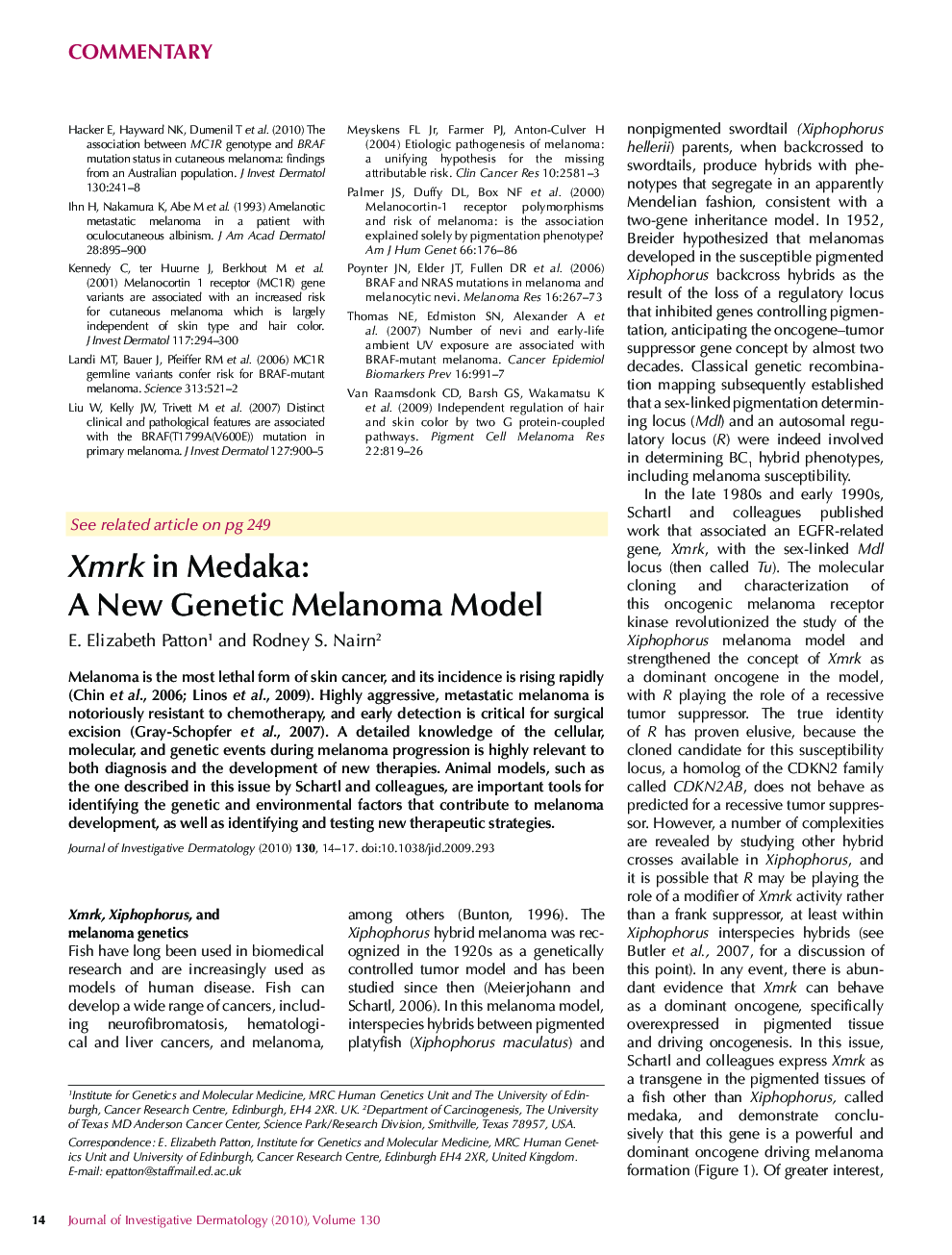| Article ID | Journal | Published Year | Pages | File Type |
|---|---|---|---|---|
| 3216245 | Journal of Investigative Dermatology | 2010 | 4 Pages |
Abstract
Melanoma is the most lethal form of skin cancer, and its incidence is rising rapidly (Chin et al., 2006; Linos et al., 2009). Highly aggressive, metastatic melanoma is notoriously resistant to chemotherapy, and early detection is critical for surgical excision (Gray-Schopfer et al., 2007). A detailed knowledge of the cellular, molecular, and genetic events during melanoma progression is highly relevant to both diagnosis and the development of new therapies. Animal models, such as the one described in this issue by Schartl and colleagues, are important tools for identifying the genetic and environmental factors that contribute to melanoma development, as well as identifying and testing new therapeutic strategies.
Related Topics
Health Sciences
Medicine and Dentistry
Dermatology
Authors
E. Elizabeth Patton, Rodney S. Nairn,
